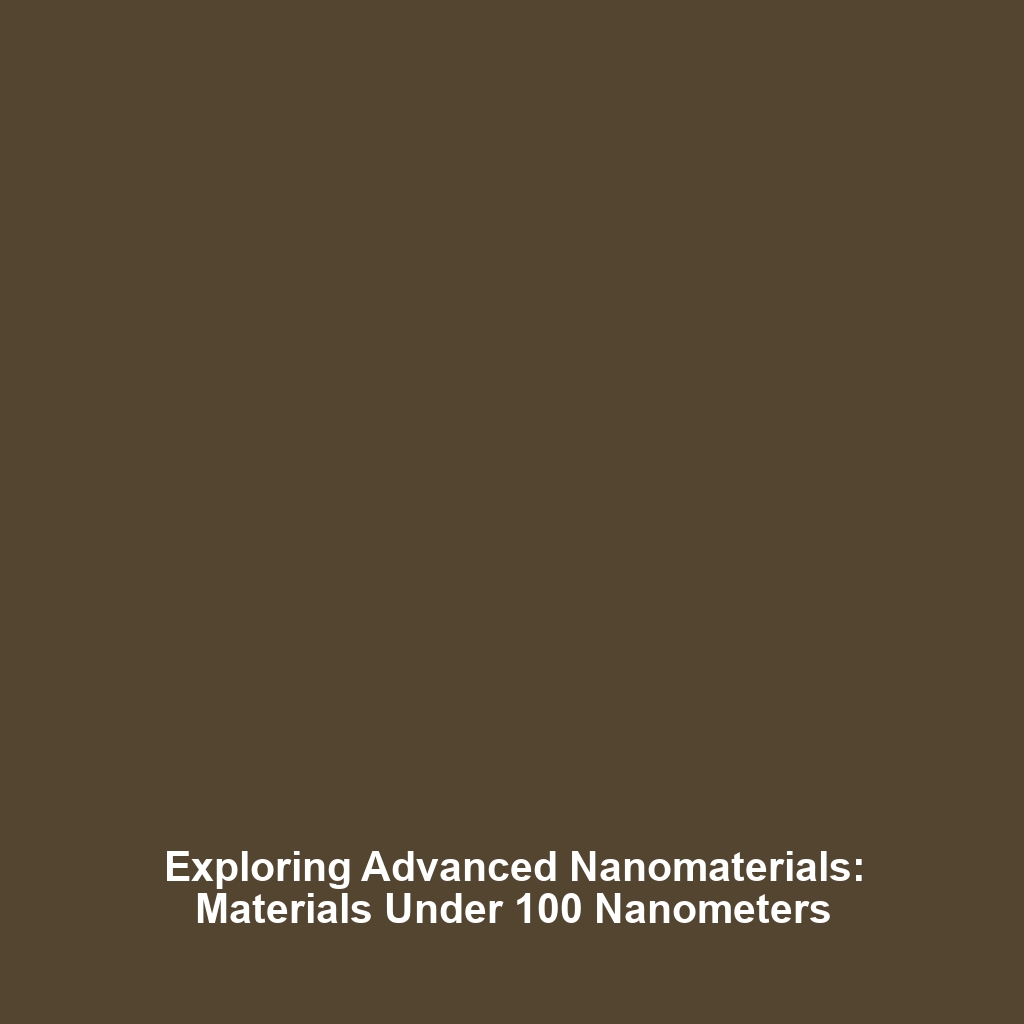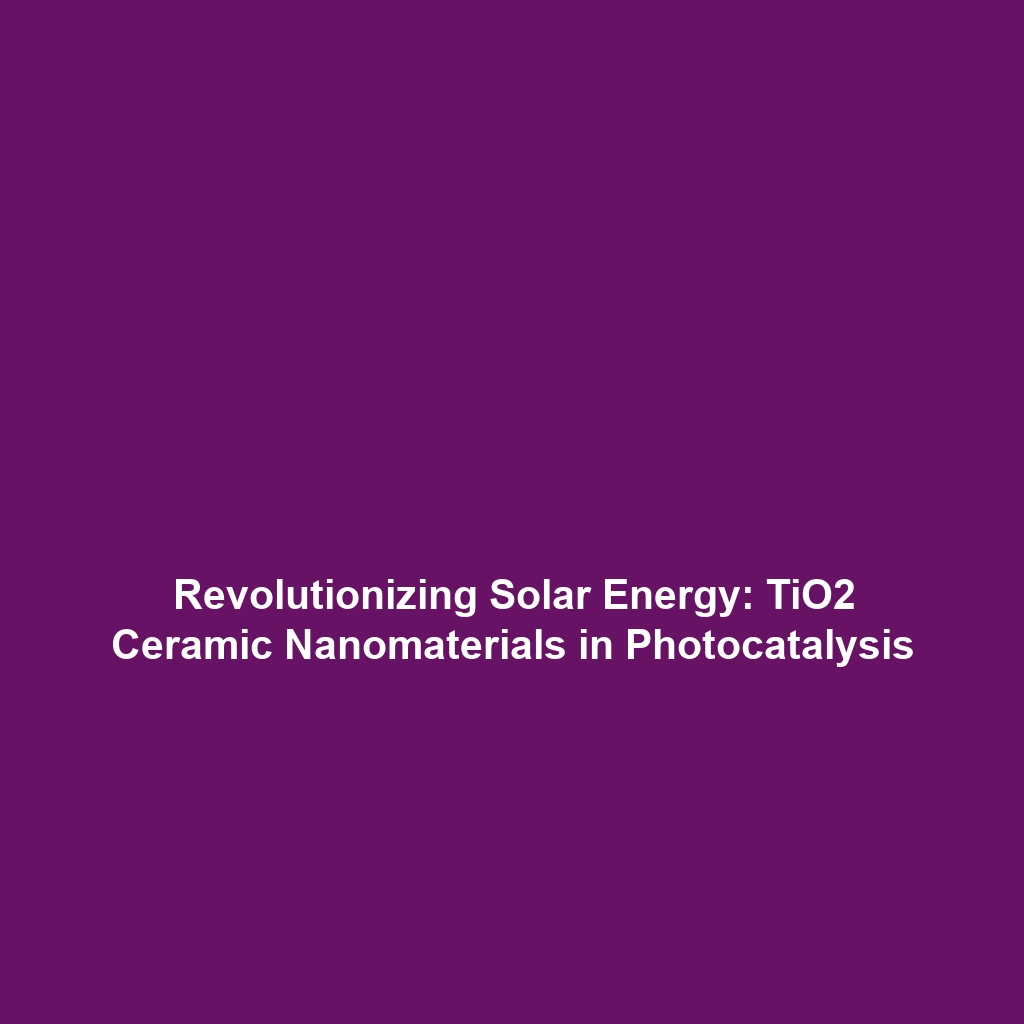Advanced Nanomaterials: Defined as Materials with at Least One Dimension Smaller Than 100 Nanometers
Introduction
Advanced nanomaterials are revolutionary substances that exhibit unique properties due to their nanoscale dimensions. Defined as materials with at least one dimension smaller than 100 nanometers, these materials play a pivotal role in various scientific and technological advancements. Their minuscule size significantly alters their physical and chemical properties, leading to enhanced performance in applications spanning electronics, medicine, and energy storage. Understanding the complexity and importance of these materials is essential for leveraging their potential and driving innovation in the field of nanotechnology.
Key Concepts
Nanoscale Dynamics
The concept of nanoscale materials encompasses a wide array of principles, including quantum effects, surface-to-volume ratio, and engineered nano-architecture.
Categorization within Advanced Nanomaterials
Defined as materials with at least one dimension smaller than 100 nanometers, these substances typically fall into categories such as nanoparticles, nanowires, and nanosheets, each showcasing unique behaviors and applications. The study of these nanomaterials reveals critical insights into material science and engineering.
Applications and Real-World Uses
The applications of materials defined as smaller than 100 nanometers are extensive and impactful. Key fields include:
- Medicine: Nanoparticles are employed in targeted drug delivery systems, enabling more effective treatments with reduced side effects.
- Energy: Advanced nanomaterials enhance battery performance and efficiency, paving the way for longer-lasting energy storage solutions.
- Electronics: Nanoscale components allow for more compact, faster, and efficient electronic devices.
- Environmental Remediation: These materials are utilized to remove pollutants from water and air effectively.
Current Challenges
Despite their advantages, the study and application of materials defined as having dimensions smaller than 100 nanometers face several challenges:
- Regulatory hurdles regarding the safe use of nanomaterials in consumer products.
- Scalability of production while maintaining uniform quality.
- Lack of comprehensive understanding of health impacts and environmental effects.
- Technical difficulties in characterization and manipulation at the nanoscale level.
Future Research and Innovations
Future research and innovations in materials defined as having at least one dimension smaller than 100 nanometers promise exciting advancements. Upcoming areas of study include:
- Development of biodegradable nanomaterials for sustainable applications.
- Breakthroughs in nanoelectronics enabling faster and smaller devices.
- Innovations in nanomedicine for personalized treatment plans.
Conclusion
In summary, materials defined as having one dimension smaller than 100 nanometers are at the forefront of scientific research and application, particularly within advanced nanomaterials. Their unique properties and versatility offer vast potential, yet they also come with significant challenges that must be addressed. Continued research and innovation in this area promise to unlock new possibilities that could reshape multiple industries. For more insights on nanotechnology, explore our related topics on Nanotechnology and Applications in Various Fields.

